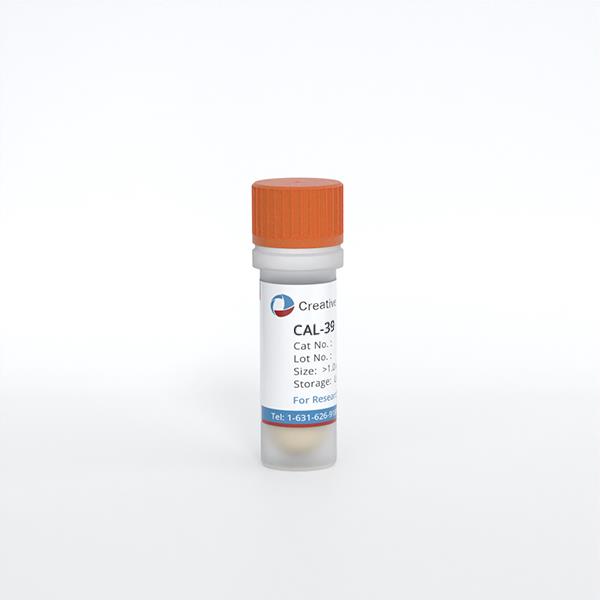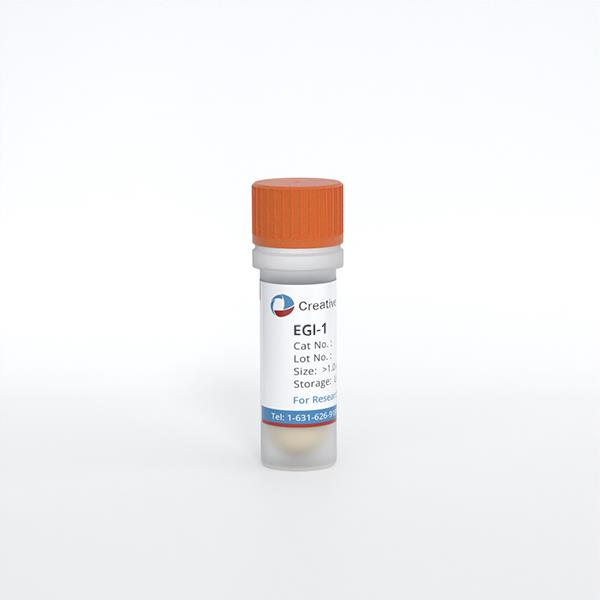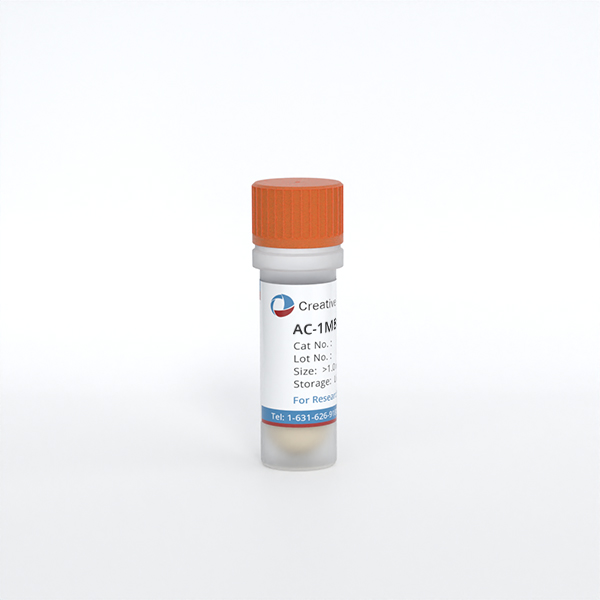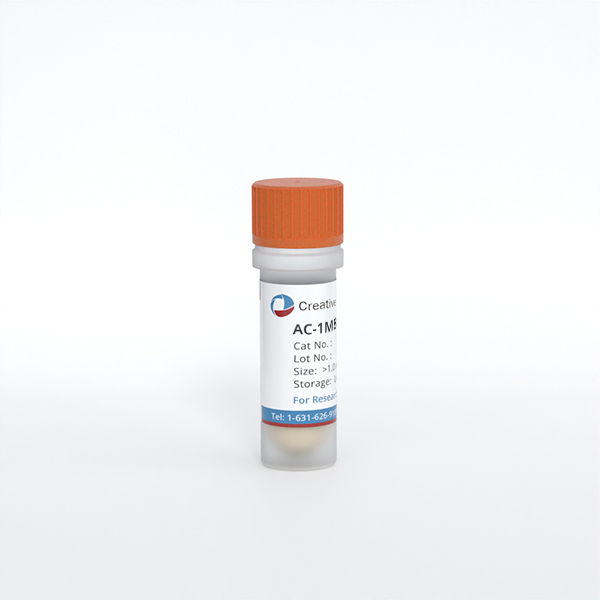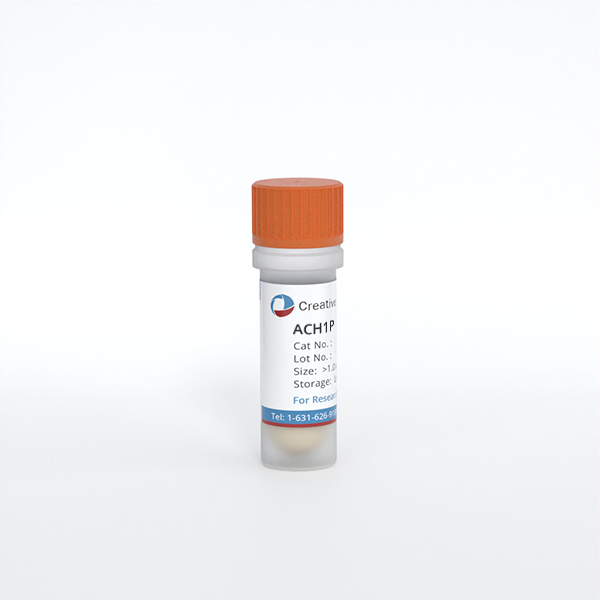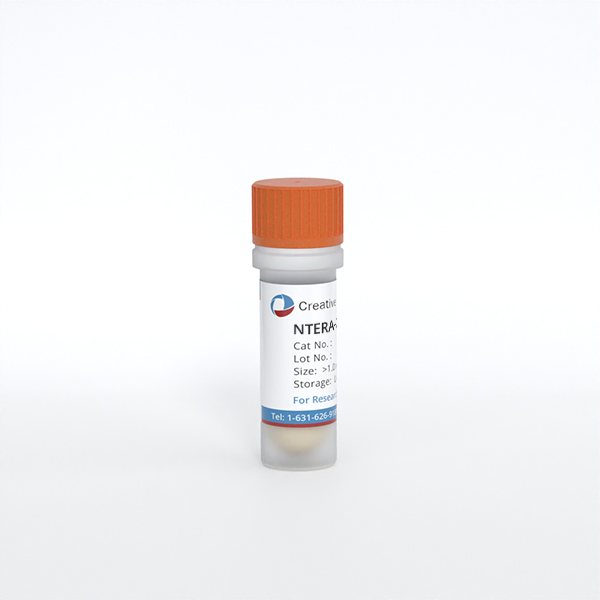Featured Products
Our Promise to You
Guaranteed product quality, expert customer support

ONLINE INQUIRY
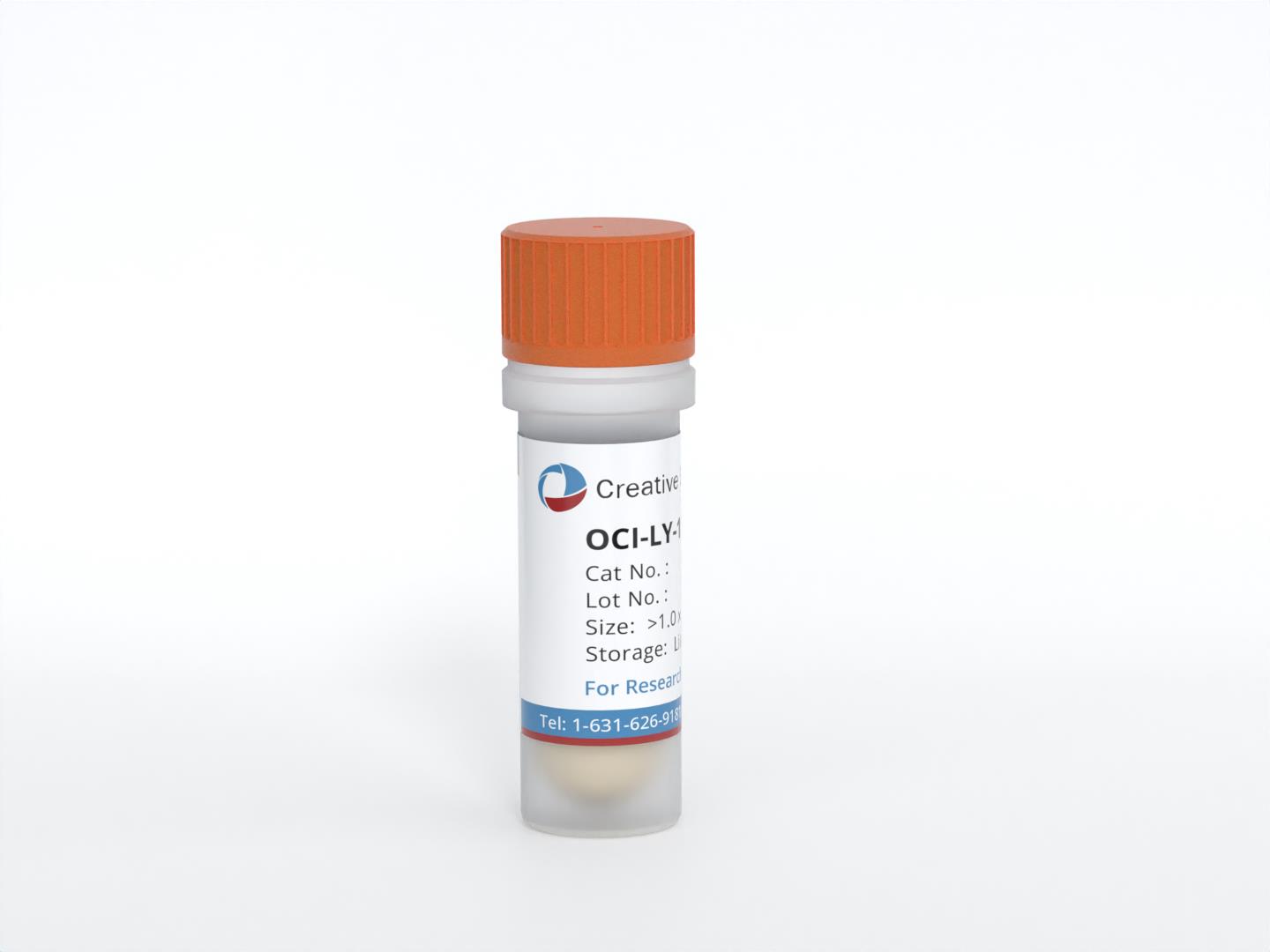
OCI-LY-1
Cat.No.: CSC-C9227W
Species: Human
Source: B cell lymphoma
Morphology: small round to polymorph cells
- Specification
- Background
- Scientific Data
- Q & A
- Customer Review
The OCI-LY-1 cell line is a pivotal resource in the study of B-cell non-Hodgkin lymphoma (B-NHL), providing invaluable insights into the disease's pathology, genetic basis, and potential therapeutic targets. Established in 1983 from the bone marrow of a 44-year-old man undergoing a relapse of stage 4B diffuse large B-cell lymphoma (DLBCL), OCI-LY-1 cells encapsulate the aggressive nature and complex biology of this lymphoma subtype.
DLBCL, the subtype represented by the OCI-LY-1 cell line, is recognized for its heterogeneity, both clinically and molecularly. This cell line has been assigned to the germinal center B-cell (GCB) lymphoma subtype, which is one of the primary subtypes of DLBCL identified through gene expression profiling. The GCB subtype originates from B-cells within the germinal center and is characterized by specific genetic and molecular features that differentiate it from other DLBCL subtypes. This distinction is crucial, as it influences the response to treatment and overall prognosis.
The derivation and maintenance of the OCI-LY-1 cell line have made it a cornerstone for numerous studies aimed at uncovering the pathophysiological mechanisms underlying B-NHL, especially the GCB subtype of DLBCL. Researchers utilize OCI-LY-1 cells to investigate genetic mutations, signaling pathways, and the microenvironment interactions that drive lymphomagenesis. Furthermore, through the study of OCI-LY-1 cells, significant progress has been made in understanding the molecular characteristics of GCB-like DLBCL, leading to the identification of potential biomarkers for diagnosis and treatment stratification.
Molecular Cytogenetic Characterization of NHL Cell Lines
Spectral karyotyping (SKY) and comparative genomic hybridization (CGH) have greatly enhanced the resolution of cytogenetic analysis, enabling the identification of novel regions of rearrangement and amplification in tumor cells. 10 malignant non-Hodgkin lymphoma (NHL) cell lines, including OCI-Ly1, OCI-Ly2, OCI-Ly3, OCI-LY4, OCI-Ly7, OCI-Ly8, OCI-Ly12, OCI-Ly13.2, OCI-Ly17, and OCI-Ly18, were analyzed by G-banding, SKY, and CGH. Fig. 1 illustrates the display and classified SKY images of a representative metaphase cell from OCI-Ly17 after hybridization with SKY painting probes.
In contrast to the 52 breakpoints identified by G-banding, SKY identified 87 breakpoints, which clustered at 1q21, 7p15, 8p11, 13q21, 13q32, 14q32, 17q11, and 18q21. G-banding identified 10 translocations, including the previously described recurring translocations, t(8;14)(q24;q32) and t(14;18)(q32;q21). In contrast, SKY identified 60 translocations, including five that were recurring, t(8;14)(q24;q32), t(14;18)(q32;q21), t(4;7)(p12;q22), t(11;18)(q22;q21), and t(3;18)(q21;p11) (Fig. 2). CGH identified seven sites of high-level DNA amplification, 1q31-32, 2p12-16, 8q24, 11q23-25, 13q21-22, 13q32-34, and 18q21-23; of these, 1q31-32, 11q23-25, 13q21-22, and 13q32-34 have previously not been described as amplified in NHL.
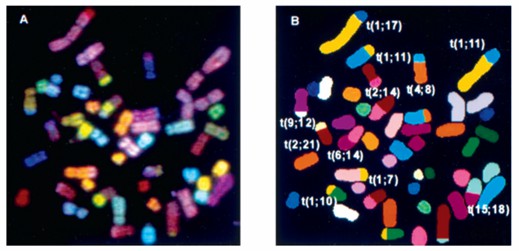 Fig. 1 A metaphase cell from the cell line OCI-Ly17 showing display (A) and classification (B) colors. (Mehra S, et al., 2002)
Fig. 1 A metaphase cell from the cell line OCI-Ly17 showing display (A) and classification (B) colors. (Mehra S, et al., 2002)
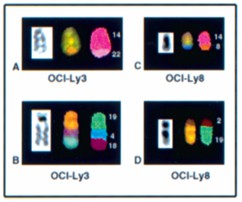 Fig. 2 Representative examples of rearrangements misidentified by G-banding that SKY identified. (Mehra S, et al., 2002)
Fig. 2 Representative examples of rearrangements misidentified by G-banding that SKY identified. (Mehra S, et al., 2002)
Effects of Different Concentrations of Doxorubicin on OCI-LY1 Cells
Adriamycin (doxorubicin) is an important traditional drug that exhibits cytotoxicity in DLBCL. At the concentration of 8 μmol/l of doxorubicin, the inhibition rate of OCI-LY1 cell proliferation was found to be 69.313 ± 5.359%, which was significantly higher than the inhibition rates 59.427 ± 4.145%, 39.563 ± 7.350%, 25.340 ± 4.835%, and 17.108 ± 3.957% at 4, 2, 1, and 0.5 μmol/l concentrations, respectively (P < 0.05). An increase in the concentration of doxorubicin resulted in a gradual increase in the suppression of the proliferation of OCI-LY1 cells, with significant differences between the groups (P < 0.05). The IC50 of doxorubicin used to intervene with OCI-LY1 cells was found to be 3.028 μmol/l for 24 h, which laid a foundation for future experiments. Overall, doxorubicin hindered the proliferation of DLBCL cells, with an increase in the concentration of doxorubicin enhancing the inhibition rate of DLBCL cells (Fig. 3 and 4).
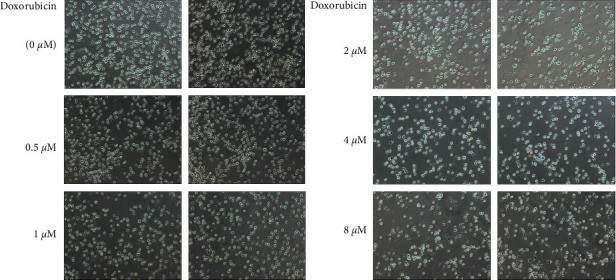 Fig. 3 Images of doxorubicin interfering with the proliferation of OCI-LY1 cells. (Yan S, et al., 2022)
Fig. 3 Images of doxorubicin interfering with the proliferation of OCI-LY1 cells. (Yan S, et al., 2022)
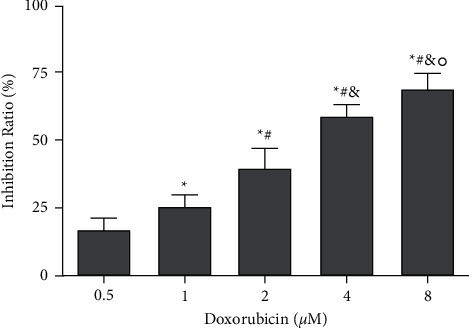 Fig. 4 Effect of doxorubicin on the proliferation of OCI-LY1 cells. (Yan S, et al., 2022)
Fig. 4 Effect of doxorubicin on the proliferation of OCI-LY1 cells. (Yan S, et al., 2022)
Automation can increase efficiency, reduce human error, and facilitate consistent and standardized quality control assessments.
OCI-LY-1 cells are assigned to the germinal center B-cell (GCB) like lymphoma subtype within the broader classification of diffuse large B-cell lymphoma (DLBCL). This subtype is characterized by originating from B-cells in the germinal center and exhibits distinct genetic and molecular profiles.
OCI-LY-1 cells can aid in the development of targeted therapies by serving as a preclinical model to test the specificity and efficacy of new drugs or treatment approaches aimed at the genetic and molecular targets relevant to the GCB subtype of DLBCL.
Given that OCI-LY-1 cells were derived from a patient at relapse, they represent a case of therapy-resistant lymphoma. This makes them particularly valuable for researching mechanisms of drug resistance, exploring how lymphoma cells evade current treatments, and testing novel strategies that could overcome or circumvent resistance pathways, ultimately leading to improvements in treatment outcomes for relapsed or refractory cases.
Ask a Question
Average Rating: 5.0 | 3 Scientist has reviewed this product
Homogeneous feature
The cells exhibit homogeneous features and maintain their phenotypes over extended periods, which is essential for conducting long-term experiments.
17 Feb 2023
Ease of use
After sales services
Value for money
Comprehensive documentation
Our laboratory has recently procured OCI-LY-1 cell products from Creative Bioarray. The OCI-LY-1 cells arrived in optimal condition, with comprehensive documentation on their handling, culture conditions, and authentication reports.
12 Jan 2024
Ease of use
After sales services
Value for money
A preferred partner
Creative Bioarray's dedication to supporting their products and research excellence makes them a preferred partner for our future cell line needs
09 May 2024
Ease of use
After sales services
Value for money
Write your own review
- You May Also Need

